Home » Acne Treatment
Acne Treatment
Schedule a Consultation
Acne vulgaris, also known as pimples, is a disease of the sebaceous glands that generate an oily substance called sebum. Multiple environmental and genetic factors can cause acne. Its manifestations range from minimal (e.g., blackheads, whiteheads, and pus-filled pimples) to severe (e.g., cystic acne).
How common is acne?
Acne is extremely common. Approximately 85% of young people deal with acne sometime during their early to late adolescence (ages 12 to 24). Some still deal with it after the age of 24. Some never have acne during their adolescence but get it in their adult years.

Which factors impact acne?
Genetic, dietary, hormonal, environmental, and lifestyle factors can all have an impact on acne.
Genetic factors can have an impact on the development of acne in an individual. Research has shown that there is a high incidence of acne in twins as well as in family units that suffer from acne conglobata, a severe kind of acne. The risk of developing acne increases if a person has hyperandrogenism, XYY chromosome syndrome, or high cortisol or experiences early-onset puberty. This type of acne typically lasts a long time and is resistant to therapy.
Certain foods and drinks have been associated with acne breakouts. Foods that contain a great deal of starch, such as refined grains, have been known to yield excess oil in the skin, resulting in acne flare-ups. Sugary drinks and dairy products can also generate excess oil in the skin.
To reduce or prevent acne, dermatologists often recommend that people consume foods that are high in fiber, such as fruits and vegetables. It has been found that some indigenous tribes who adhere to a plant-based diet the majority of the time do not experience acne. This has led to studies concerning the role of insulin in the development of acne.
Hormones can have an impact on acne. Women with polycystic ovary syndrome have low estrogen and progesterone levels and high androgen levels, resulting in hormonal acne. During a woman’s menstrual cycle, her estrogen and progesterone levels can decrease if her egg is not fertilized, leading to acne formation on the skin. Meanwhile, hormones like progesterone can increase exponentially during pregnancy, causing excess sebum production (i.e., oily, acne-prone skin). The high androgen levels many people experience during puberty or when they are dealing with extreme stress can also trigger excess sebum production.
Several elements within the environment have been linked to acne development. High temperature, humidity, and sun exposure have been known to promote excess sebum production. Air pollutants and the halogenated hydrocarbons present in the environment have been known to clog pores and generate inflammation in the skin.
People who smoke tobacco products are often at a higher risk of developing post-pubertal acne because the toxins in those products can reduce blood flow to the skin, contributing to breakouts. Individuals who use pore-clogging skin care or makeup products may develop acne. Lack of high-quality sleep has also been linked to the development of acne because it can cause hormonal imbalances (e.g., a spike in cortisol levels), resulting in excess sebum production.


How does acne present?
Acne can present with a combination of noninflammatory features, such as blackheads, and inflammatory ones, such as cysts, papules, nodes, pustules, and fistulas. The number of inflammatory elements determines the severity of a case of acne.
What are the types of acne?
- Comedonal acne: This condition is characterized by small acne papules. It is typically the result of clogged pores. Whiteheads and blackheads are forms of comedonal acne. Blackheads are open bumps, while whiteheads are closed ones.
- Cystic acne: This is an inflammatory type of acne that consists of breakouts that are quite large and painful. The pimples are filled with oil, pus, and bacteria and often swell a great deal. Genetics, hormonal changes, and poor skin care can lead to cystic acne.
- Acne excoriate: Also known as picker's acne, acne excoriate occurs when an individual picks or scratches their acne and worsens the state of their skin, usually causing more acne to form. People with this condition usually experience a great deal of scarring. Oftentimes, a patient will use psychotropic medications for acne treatment to deal with this condition.
- Acne conglobate: This sort of acne is both severe and rare. Those with this condition have abscesses that are extremely inflamed and burrowing. They can develop profound scarring and may even experience disfigurement. This condition manifests almost exclusively in men.
- Acne fulminans: This condition involves the sudden appearance of nodular acne features in conjunction with different systemic manifestations. This is a rare kind of acne that occurs mostly in male teenagers, between the ages of 13 to 16, who previously experienced a mild disease. The elements of acne suddenly blend into nodes and conglobates that have hemorrhagic crusts. There might be bone pain in addition to skin manifestations. The clavicle, sternum, ankles, humerus, and bones of the sacroiliac joint are impacted by this condition.
- Chloracne: This is a severe type of acne that is triggered by the intake of chlorine compounds. The rash develops a few weeks after one consumes a substance that contains chlorine. In addition to the face, the armpits and scrotum are affected. The disease can be pinpointed by the appearance of small cysts and nodules. These cysts and nodules eventually heal with scarring.
- Fungal acne: This fungal condition occurs when yeasts accumulate within the hair follicles. Fungal acne is not technically acne, but it looks very similar to acne since it results in small pimples appearing on the skin. These pimples are often red and itchy. Fungal acne can be addressed using antifungal creams or pills.
- Back acne: Also called bacne, back acne occurs when acne forms on a person's back. This may be due to the person wearing sweaty or dirty clothing, exercising a great deal, or wearing backpacks or hauling equipment on their back. Extra showers, cleansers, and exfoliants are acne treatments that can tackle back acne.
- Buttocks acne: Also termed butt acne, buttocks acne happens when an individual develops acne on their butt cheeks. Butt acne may be caused by genetics, tight clothing, or excessive sweating. Treatments include exfoliants, benzoyl peroxide, and antibiotics. Those affected may also benefit from staying away from tight clothing and taking extra showers.

How does acne affect a person's self-esteem?
Acne can lead to significant mental and emotional problems, especially in adolescents. Teenagers and young adults can develop low self-esteem, depression, and anxiety if they have acne. People with acne experience bullying at higher rates and are at a higher risk of being victims of physical abuse. Taking all this into consideration, acne therapy needs to be efficient and widely available and should begin as early as possible for an individual.
Why is pimple popping bad?
Popping pimples and removing blackheads with an at-home blackheads remover kit is not advised. It can aggravate breakouts and result in more pimples and blackheads forming because it inflames the skin and causes bacteria to seep into it. At Dermatology Circle, we use sterile instruments and clinically proven techniques to get rid of pimples and blackheads without causing severe damage to the skin.
Do pimple patches help?
Pimple patches, such as hydrocolloid patches, can help because they can absorb moisture. such as oil and pus, reducing the size of a pimple. However, these patches typically only work on mild forms of acne and not severe ones like cystic acne.

Why see Dr. Kazlouskaya at Dermatology Circle for acne?
Dr. Kazlouskaya will guide patients during every part of their treatment and aid them in attaining the skin of their dreams. She also believes in personalizing skin care, so she will examine the unique elements of a patient’s skin, such as their complexion and sensitivities. Visit Dr. Kazlouskaya at Dermatology Circle and see your skin transform.

PHONE
ADDRESS
801 Madison avenue, 4th Floor, NY – New York, NY, 10065
OPENING HOURS
Monday 9AM-5PM
Tuesday 9AM-5PM
Friday 10AM-6PM
Every other Saturday 9AM-2PM (please, call in advance)
